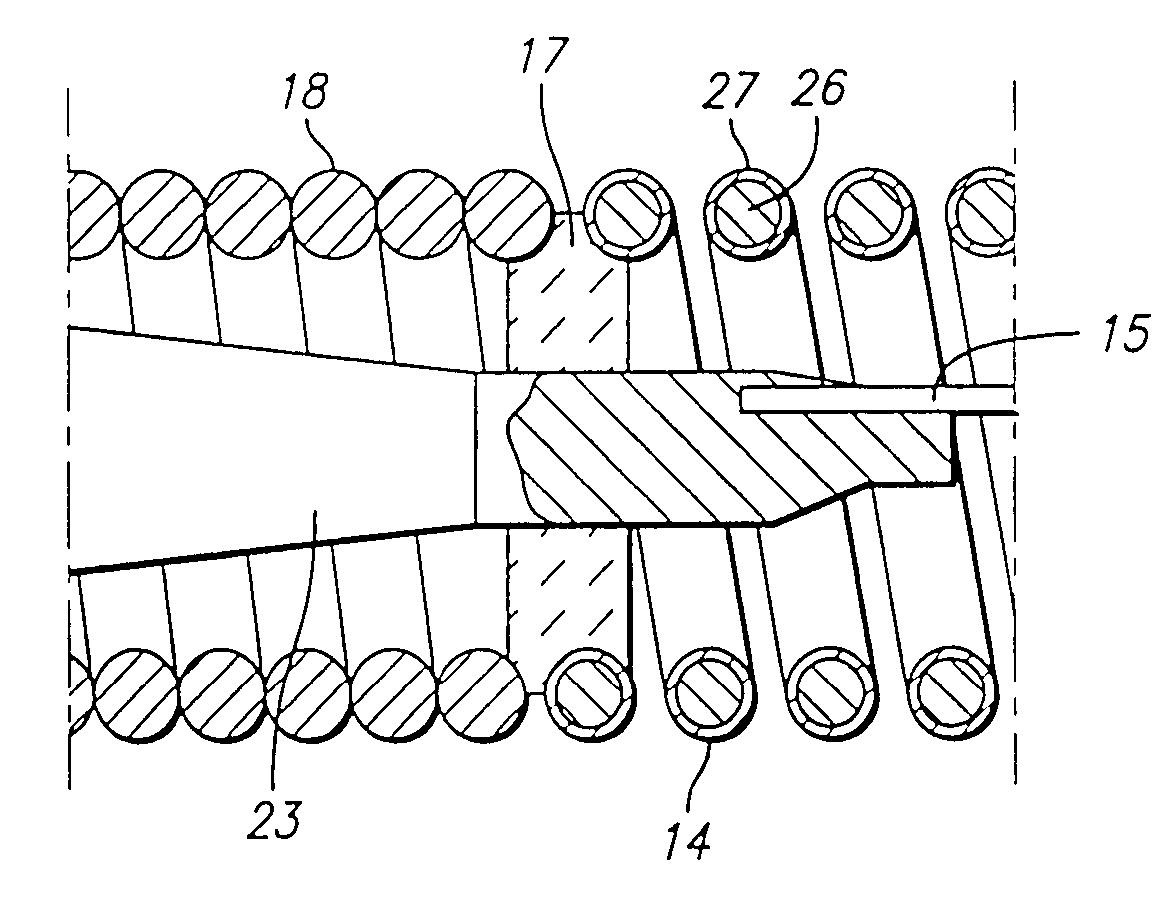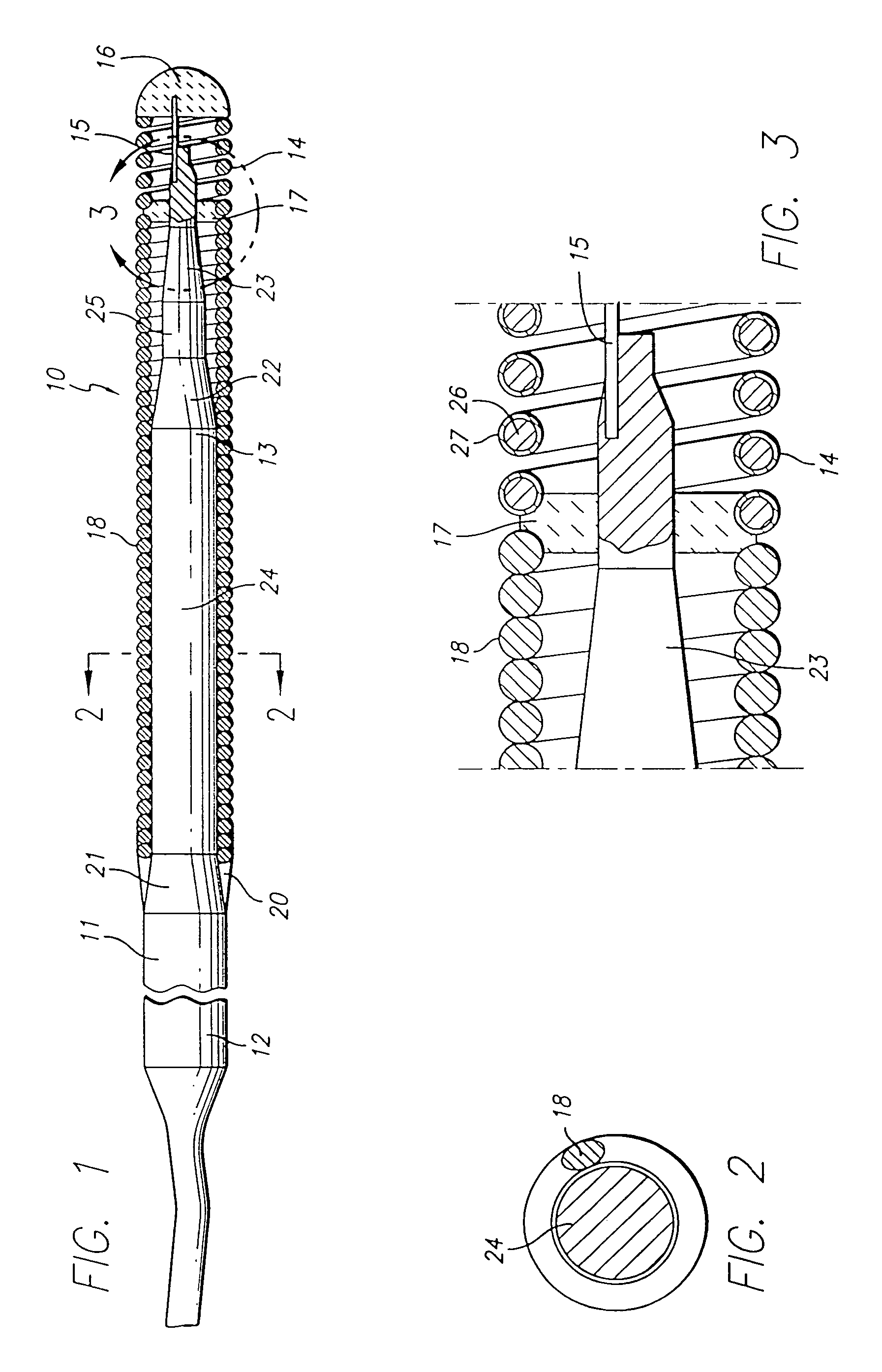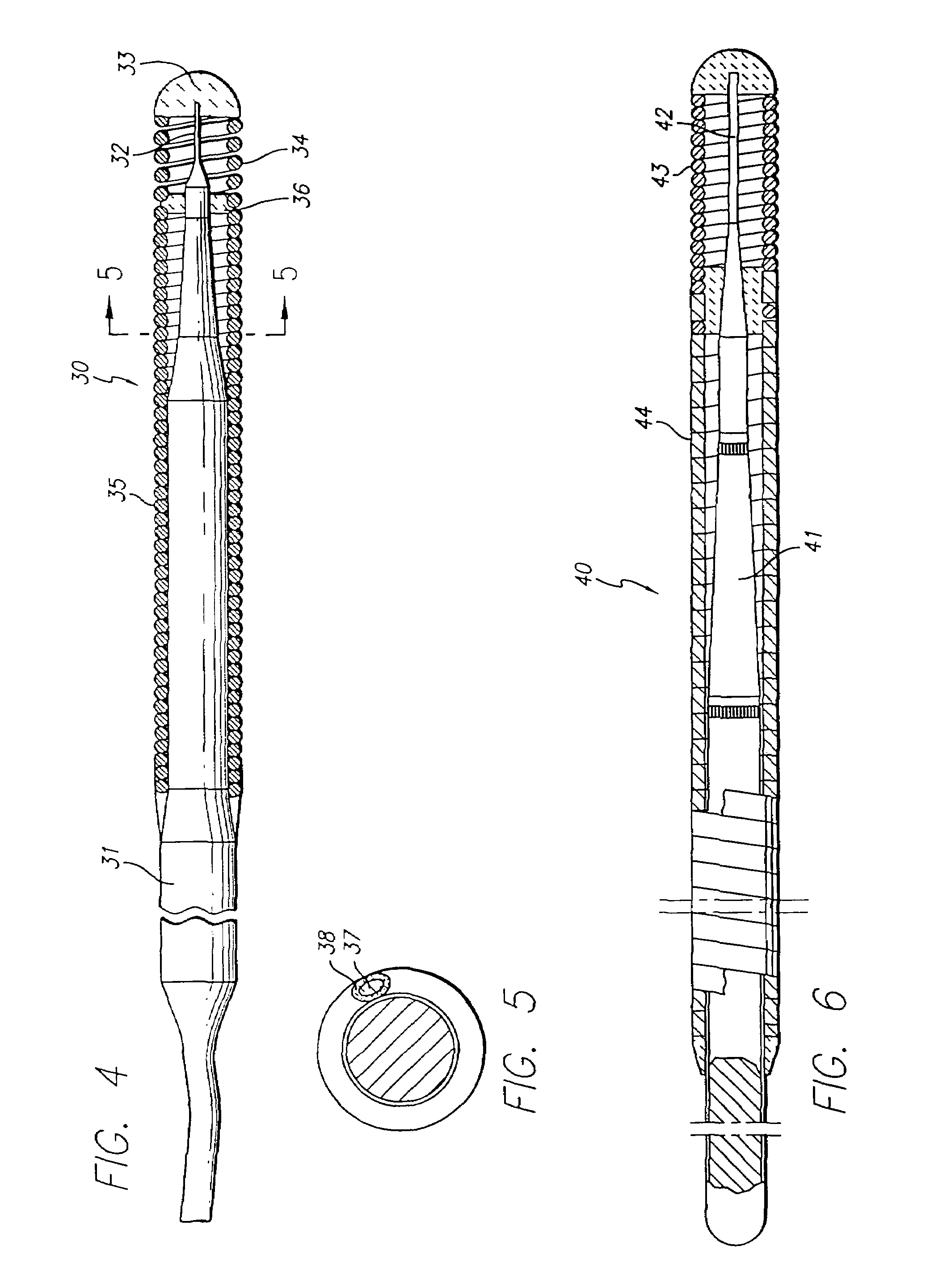Process for providing composite radiopaque intracorporeal product
a radiopaque, intracorporeal technology, applied in the direction of guide wires, applications, catheters, etc., can solve the problems of high cost and scarcity of highly radiopaque metals, difficulty and expense of manufacturing products from these materials, and the most suitable materials for guidewires, etc., to achieve the effect of increasing the flexibility of the distal section of the guidewire, reducing transverse dimensions, and increasing stiffness
- Summary
- Abstract
- Description
- Claims
- Application Information
AI Technical Summary
Benefits of technology
Problems solved by technology
Method used
Image
Examples
Embodiment Construction
[0026]FIGS. 1-3 illustrate a guidewire 10 having features of this invention that generally include an elongated core member 11, with a proximal core section 12 and a distal core section 13 and a distal, highly radiopaque helical coil 14 disposed about and secured to the distal extremity of the core member. A shaping ribbon 15 extends from the distal end of the core member 11 and is secured to the mass of solder or weldment forming the rounded distal tip 16 of the guidewire. The proximal end of the shaping ribbon 15 is secured to the distal end of the core member 11 by suitable means such as solder, brazement, weldment or adhesive. The proximal end of the distal highly radiopaque coil 14 is secured to the core member 11 by mass 17 which may be solder, brazement, weldment or adhesive. A second or proximal coil 18 is secured by its distal end to the core member by the same mass that secures the proximal end of the distal highly radiopaque coil 14 to the core member 11. The proximal end...
PUM
| Property | Measurement | Unit |
|---|---|---|
| thickness | aaaaa | aaaaa |
| length | aaaaa | aaaaa |
| lengths | aaaaa | aaaaa |
Abstract
Description
Claims
Application Information
 Login to View More
Login to View More - R&D
- Intellectual Property
- Life Sciences
- Materials
- Tech Scout
- Unparalleled Data Quality
- Higher Quality Content
- 60% Fewer Hallucinations
Browse by: Latest US Patents, China's latest patents, Technical Efficacy Thesaurus, Application Domain, Technology Topic, Popular Technical Reports.
© 2025 PatSnap. All rights reserved.Legal|Privacy policy|Modern Slavery Act Transparency Statement|Sitemap|About US| Contact US: help@patsnap.com



